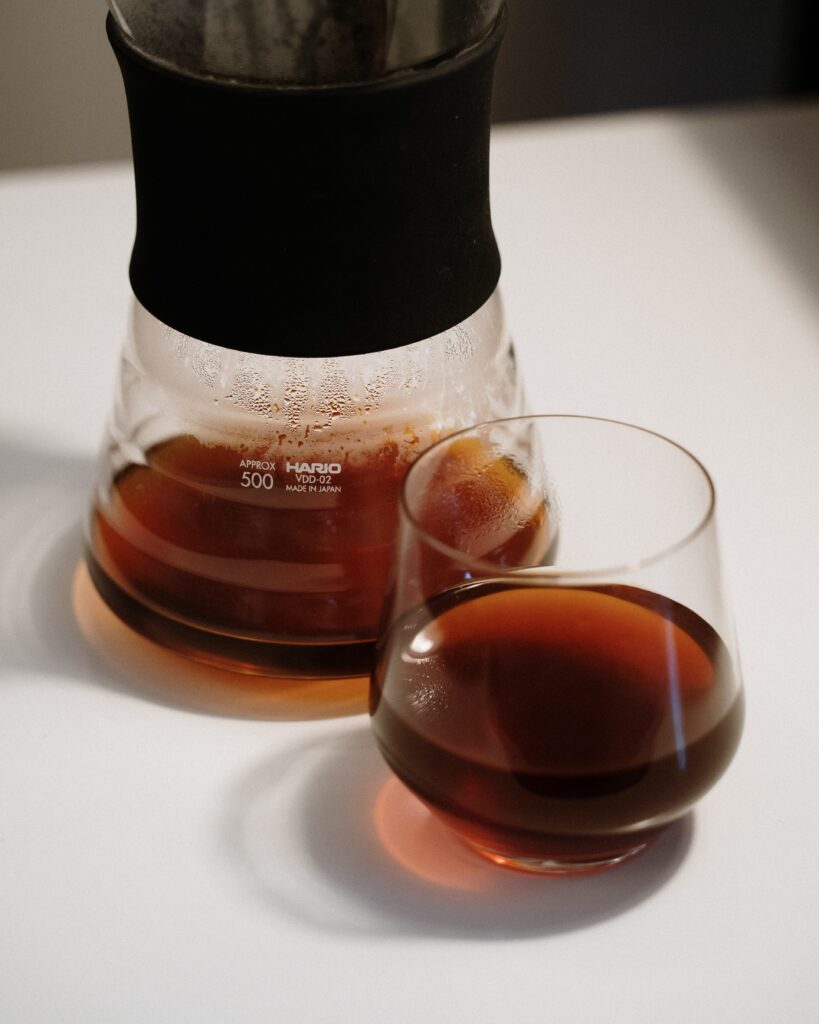Are you a wine aficionado, or simply someone who enjoys a delicious glass of vino every now and then? Either way, you’ve probably found yourself wondering how often you should change the filter in your wine fridge. Well, look no further because we have the answer for you! In this article, we will explore the importance of regularly changing the filter in your wine fridge and provide you with some helpful tips on how to determine when it’s time for a replacement. So grab a glass of your favorite wine, sit back, and let’s dive into the world of wine fridge filters!

Understanding the Purpose of the Filter in a Wine Fridge
What it means to have a filter in your wine fridge
Having a filter in your wine fridge is an important feature that plays a significant role in preserving the quality of your wine. The filter helps to remove various impurities, odors, and airborne particles that can negatively impact the flavor and aroma of your wine.
The role of the filter in preserving wine quality
The filter in your wine fridge works by removing unwanted particles and contaminants from the air circulating within the fridge. This is crucial because improper storage conditions can lead to wine spoilage, affecting both the taste and fragrance of the wine. By having a filter in place, you can ensure that the air quality inside the fridge remains clean and free from any substances that could potentially harm your wine.
How filters combat odors and airborne particles
Odors and airborne particles are one of the main culprits that can taint the quality of your wine. These can come from a variety of sources, such as spoiled food, strong kitchen aromas, or even chemicals present in the air. The filter in your wine fridge helps eliminate these odors and particles, ensuring that your wine remains free from any unwanted influences that could alter its taste and aroma.
Different Types of Filters in a Wine Fridge
Active Charcoal Filters
Active charcoal filters are a common type of filter used in wine fridges. These filters are composed of activated carbon, which has the ability to adsorb impurities and odors. The activated carbon acts like a sponge, trapping unwanted particles and ensuring only clean air circulates within the fridge. Active charcoal filters are known for their strong odor-absorbing properties, making them a popular choice for wine enthusiasts.
Fiber filters
Fiber filters are another type of filter commonly found in wine fridges. These filters are made up of layers of fine fibers that help to capture and trap airborne particles. Fiber filters are effective in removing dust, pollen, and other small particles that can affect the air quality inside the fridge. They are often used in combination with other types of filters for enhanced filtration.
Polyester filters
Polyester filters are versatile filters that are commonly used in various applications, including wine fridges. These filters are made from synthetic fibers that are densely packed together. Polyester filters effectively capture and retain particles, ensuring a clean and purified air supply within the fridge. They are known for their durability and longevity, making them a reliable choice for maintaining the air quality in your wine fridge.
Discussing the lifespan and effectiveness of each type
The lifespan and effectiveness of each type of filter can vary depending on several factors, such as the quality of the filter itself, the maintenance of the fridge, and the conditions in which the fridge is kept. Generally, active charcoal filters need to be replaced every three to six months, fiber filters should be replaced every six to nine months, and polyester filters can last up to a year before needing replacement. However, it is important to refer to the manufacturer’s instructions for specific guidance on the lifespan and replacement intervals for your particular filter.

Factors Influencing Filter Life
The location of the wine fridge
The location of your wine fridge can have a significant impact on the lifespan of the filter. If your wine fridge is placed in an area with high humidity or excessive dust, the filter may become clogged more quickly, reducing its effectiveness. It is important to consider the environment in which your wine fridge is situated and take appropriate measures to minimize the presence of contaminants that could affect the filter.
The amount of wine stored
The amount of wine stored in your fridge can also influence the lifespan of the filter. If you have a large collection of wine and frequently open and close the fridge, the filter may have to work harder to maintain the air quality. This increased usage can lead to quicker saturation of the filter, requiring more frequent replacements.
The type of wine stored
Different types of wine can release varying amounts of gases and odors, which can pose challenges for the filter. If you store wines with strong aromas, such as red wines or aged wines, the filter may need to be replaced more frequently to effectively combat these odors. On the other hand, storing wines with milder aromas may result in a longer lifespan for the filter.
Frequency of fridge usage
The frequency at which you use your wine fridge can impact the lifespan of the filter. If you frequently open and close the fridge or leave it open for extended periods, the filter has to work harder to maintain the air quality. This increased usage can lead to the filter becoming saturated more quickly and needing replacement sooner.
Indicators That Your Filter Needs Changing
Change in wine taste
One of the key indicators that your filter needs changing is a noticeable change in the taste of your wine. If you start experiencing off-flavors or an unpleasant aftertaste, it could be a sign that the filter is no longer effectively removing the impurities from the air. Changing the filter can help restore the desired taste and maintain the quality of your wine.
Odors in the fridge
Another indicator that your filter needs changing is the presence of unpleasant odors in your wine fridge. If you notice persistent smells that are not related to your wine, it is likely that the filter is no longer able to effectively absorb and eliminate odors. Replacing the filter will help freshen up the air inside the fridge and ensure that undesirable smells do not affect your wine.
Visual signs in the filter
Inspecting the condition of the filter can provide visual indications that it needs changing. If you notice a buildup of dirt, dust, or discoloration on the filter, it is a clear sign that it has reached its limit and should be replaced. Additionally, if you see any visible damage or signs of wear and tear, it is important to replace the filter to ensure optimal filtration.
Changes in fridge performance
If you notice changes in the performance of your wine fridge, such as inconsistent temperature control or increased condensation, it could be a result of a clogged or malfunctioning filter. A filter nearing the end of its lifespan may impede proper airflow, leading to suboptimal cooling and increased moisture buildup. Changing the filter can help restore normal operations and prevent further issues with your wine fridge.

The Consequences of Not Changing Your Wine Fridge Filter
Impacts on wine flavor and fragrance
Failing to change your wine fridge filter can have significant consequences on the flavor and fragrance of your wine. As the filter becomes saturated and unable to effectively remove impurities, it can allow unwanted particles and odors to come into contact with your wine. This can result in off-flavors, muted aromas, and an overall diminished wine-drinking experience.
Inefficiency of the fridge due to possible blockages
A filter that is not regularly changed can become clogged with dirt, dust, and other particles over time. This can obstruct the airflow within the fridge and lead to inefficient cooling. Your wine fridge may struggle to maintain the desired temperature, resulting in fluctuating internal conditions that can negatively impact the storage and aging process of your wine. Regularly changing the filter ensures proper airflow and efficient operation of your wine fridge.
Promotion of mold growth and other contaminants
An old and ineffective filter can create an environment conducive to mold growth and the accumulation of other contaminants inside your wine fridge. Mold can thrive in moist and stagnant air, and a filter that is unable to remove excess moisture can contribute to its development. The presence of mold and other contaminants can not only impact the quality of your wine but can also pose health risks. Changing the filter regularly helps prevent the growth of mold and promotes a clean and healthy wine storage environment.
Understanding Filter Maintenance Instructions
Following manufacturer’s recommendations
To ensure proper maintenance of your wine fridge filter, it is essential to follow the manufacturer’s recommendations. Different wine fridges may have specific instructions on the maintenance and replacement of the filter. These instructions may include the recommended filter lifespan, the frequency of replacement, and any additional care or cleaning instructions. Adhering to these guidelines will help you maintain the optimum performance of your wine fridge and ensure the longevity of your filter.
Deciphering filter maintenance labels
Some filters may come with maintenance labels or indicators that offer guidance on when to change the filter. These labels often display a date or a color change, signaling the need for replacement. It is important to familiarize yourself with these labels and understand how to interpret them correctly. Regularly checking these indicators will help you stay on top of filter changes and maintain a consistently clean and effective filter in your wine fridge.
Importance of maintaining a maintenance schedule
Establishing a maintenance schedule for your wine fridge filter is crucial to ensure its ongoing performance. By setting a regular interval for filter replacement, you can avoid the risk of forgetting or neglecting this important task. Incorporate filter replacement into your overall wine fridge maintenance routine and mark it on your calendar or set reminders to ensure you stay on track. By adhering to a schedule, you can maintain optimal filter performance and safeguard the quality of your wine.
How to Change Your Wine Fridge Filter
Locating the filter
The first step in changing your wine fridge filter is to locate its position within the appliance. Consult your wine fridge’s user manual or check the manufacturer’s website for guidance on where the filter is located. Typically, the filter will be situated in the back or the side of the fridge, easily accessible for replacement.
Removing the old filter
Once you have located the filter, it is time to remove the old one. Carefully follow the instructions provided by the manufacturer to ensure proper removal. This may involve unscrewing or unlocking the filter compartment before gently sliding or pulling the old filter out.
Installing the new filter
After removing the old filter, it is time to install the new one. Make sure to select the correct replacement filter that matches the specifications of your wine fridge. Slide the new filter into the designated compartment, ensuring a snug fit. Follow any additional instructions provided by the manufacturer, such as locking or screwing the compartment back into place.
Post-installation steps
Once the new filter is installed, it is important to perform a few post-installation steps to ensure proper functioning. Check that the filter compartment is securely closed to prevent any potential air leaks. Power on the wine fridge and monitor its performance for the first few hours to ensure everything is functioning as expected. Finally, make a note of the date of installation or set a reminder for future filter replacement based on the recommended lifespan.
Common FAQs About Wine Fridge Filters
Why does my filter turn brown?
If you notice your filter turning brown or discoloring over time, it is typically a result of the filter’s absorption of impurities and odors from the air. Active charcoal filters, in particular, are known to change color as they adsorb these substances. This change in color is an indication that the filter is doing its job, but it also signifies that the filter may need replacement soon.
Can I wash and reuse my fridge filter?
The majority of refrigeration filters, including those found in wine fridges, are not designed to be washed or reused. While it may be tempting to try and prolong the life of the filter, cleaning or reusing it can lead to ineffective filtration and potential contamination issues. It is recommended to always replace the filter with a new one according to the manufacturer’s guidelines.
Why is my fridge making noises after filter change?
If you notice unusual noises coming from your wine fridge after changing the filter, it could be due to air pockets trapped within the system. Sometimes, when a new filter is installed, it takes a bit of time for the air to fully circulate and for the fridge to adjust to the change. This can result in temporary noises that should subside after a few hours. If the noises persist or become more concerning, it is advisable to contact the manufacturer or a professional for further assistance.
In conclusion, understanding the purpose and importance of the filter in your wine fridge is crucial in maintaining the quality and longevity of your wine. By choosing the right type of filter, regularly monitoring its condition, and following proper maintenance and replacement procedures, you can ensure optimal filtration and create an environment that preserves the true flavors and aromas of your favorite wines. Cheers to enjoying your wine at its best!
